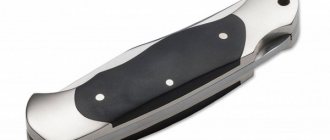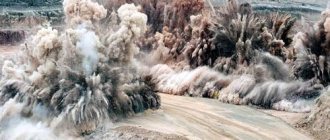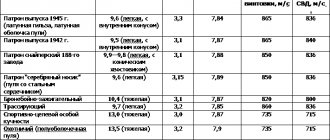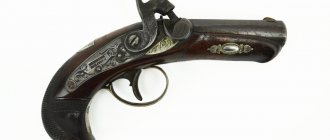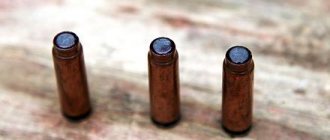Story
Background to the appearance of gunpowder
Scientists have debated for a long time about the time of its creation. Some argued that it was invented in Asian countries, while others, on the contrary, disagree and prove the opposite, that gunpowder was invented in Europe, and from there it came to Asia.
Everyone agrees that China is the birthplace of gunpowder.
The existing manuscripts speak of noisy holidays that were held in the Middle Kingdom with very loud explosions that were not familiar to Europeans. Of course, it was not gunpowder, but bamboo seeds, which burst with loud noise when heated. Such explosions made Tibetan monks think about the practical application of such things.
History of invention
Now it is no longer possible to determine with an accuracy of one year the time of the invention of gunpowder by the Chinese, however, according to manuscripts that have survived to this day, there is an opinion that in the middle of the 6th century, the inhabitants of the Celestial Empire also knew the composition of substances with the help of which fire with a bright flame could be obtained. The Taoist monks advanced the furthest towards the invention of gunpowder, who eventually invented gunpowder.
Thanks to the found work of monks, which was dated back to the 9th century, which contains lists of all certain “elixirs” and how to use them.
Much attention was paid to the text, which indicated the prepared composition, which unexpectedly ignited right after production and caused burns to the monks.
If the fire was not put out immediately, the alchemist’s house would burn to the ground.
Thanks to such information, discussions about the place and time of the invention of gunpowder were ended. Well, I must say that after the invention of gunpowder, it only burned, but did not explode.
See also the article Handcuffs, their description and characteristics
The first composition of gunpowder
The composition of gunpowder required an exact ratio of all components. It took the monks another year to determine all the shares and components. As a result, a mixture was obtained that received the name “fire potion.” The potion contained molecules of coal, sulfur and saltpeter. There is very little saltpeter in nature, with the exception of the territories of China, where saltpeter can be found directly on the surface of the earth in a layer of several centimeters.
Gunpowder components:
| Components | Gunpowder of the XXIII century | |||
| Chinese * | Greek ** | Arab *** | English **** | |
| Saltpeter | 61,0 | 69,2 | 69,5 | 41,2 |
| Charcoal | 18,3 | 23,0 | 15,7 | 29,4 |
| Sulfur | 18,3 | 7,8 | 14,8 | 29,4 |
| Mi-to-shin(?) | 2,4 | — | — | — |
| Total | 100 | 100 | 100 | 100 |
Peaceful uses of gunpowder in China
When gunpowder was first invented, it was mainly used in the form of various sound effects or for colorful “fireworks” during entertainment events. However, local sages understood that the combat use of gunpowder was also possible.
China in those distant times was constantly at war with the nomads around it, and the invention of gunpowder was in the hands of military commanders.
Gunpowder: First military use by the Chinese
There are manuscripts by Chinese monks that claim the use of a “fire potion” for military purposes. The Chinese military surrounded the nomads and lured them into a mountainous area, where gunpowder charges were pre-installed and set on fire after the enemy’s campaign.
Strong explosions paralyzed the nomads, who fled in shame.
Having understood what gunpowder is and realizing its capabilities, the emperors of China supported the production of weapons using a fiery mixture, including catapults, powder balls, and various projectiles. Thanks to the use of gunpowder, the troops of the Chinese commanders did not know defeat and put the enemy to flight everywhere.
Chinese military
Gunpowder leaves China: Arabs and Mongols begin to make gunpowder
According to information received, around the 13th century, information about the composition and proportions for the manufacture of gunpowder was obtained by the Arabs; there is no exact information about how this was done. According to one legend, the Arabs massacred all the monks of the monastery and received a treatise. In the same century, the Arabs were able to build a cannon that could fire gunpowder shells.
"Greek Fire": Byzantine Gunpowder
The use of gunpowder by the Arabs
Further information from the Arabs about gunpowder and its composition in Byzantium. By slightly changing the composition qualitatively and quantitatively, a recipe was obtained, which was called “Greek fire”. The first tests of this mixture were not long in coming.
During the defense of the city, cannons loaded with Greek fire were used. As a result, all the ships were destroyed by fire. Accurate information about the composition of “Greek fire” has not reached our times, but presumably it was used - sulfur, oil, saltpeter, resin and oils.
Gunpowder in Europe: who invented it?
For a long time, Roger Bacon was considered the culprit behind the appearance of gunpowder in Europe. In the mid-thirteenth century, he became the first European to describe in a book all the recipes for making gunpowder. But the book was encrypted, and it was not possible to use it.
Berthold Schwartz
If you want to know who invented gunpowder in Europe, then the answer to your question is the story of Berthold Schwartz. He was a monk and practiced alchemy for the benefit of his Franciscan Order. At the beginning of the fourteenth century he worked to determine the proportions of the substance from coal, sulfur and saltpeter. After much experimentation, he managed to grind the necessary components in a mortar in a proportion sufficient to cause an explosion.
The blast wave almost sent the monk to the next world.
See also the article Laser light pointer and its characteristics
The invention marked the beginning of the era of firearms.
The first model of the “shooting mortar” was developed by the same Schwartz, for which he was sent to prison in order to not disclose the secret. But the monk was kidnapped and secretly transported to Germany, where he continued his experiments in improving firearms.
How the inquisitive monk ended his life is still unknown. According to one version, he was blown up on a barrel of gunpowder; according to another, he died safely at a very old age. Be that as it may, gunpowder gave the Europeans great opportunities, which they did not fail to take advantage of.
The appearance of gunpowder in Rus'
There is no exact answer about the origin of gunpowder in Rus'. There are many stories, but the most plausible is considered to be that the composition of the gunpowder was provided by the Byzantines. For the first time, gunpowder was used in a firearm when defending Moscow from a raid by the troops of the Golden Horde. Such a gun did not incapacitate the enemy’s manpower, but made it possible to frighten horses and sow panic in the ranks of the Golden Horde.
Mattress
Smokeless powder recipe: who invented it?
Inventor of gunpowder, Alfred Nobel
Approaching more modern centuries, let's say that the 19th century is the time of improvement of gunpowder. One of the interesting improvements is the invention of pyroxylin powder, which has a solid structure, by the Frenchman Viel. Its first use was appreciated by representatives of the defense department.
The point is that the gunpowder burned without smoke, leaving no traces.
A little later, inventor Alfred Nobel announced the possibility of using nitroglycerin gunpowder in the production of projectiles. After these inventions, gunpowder was only improved and its characteristics improved.
Battle of Crecy
The first bombards (prototype of cannons) were used in 1346 by the army of the English king Edward III , at the Battle of Crecy. The French were inflicted a crushing defeat, the ratio of losses between the parties was 1 to 28! But in fairness, let us mention that the British owe their victory to the long bows they had in their arsenal, which were significantly superior in their fighting qualities to the crossbows of the Genoese, who were allies of the French. The bombers completed the rout, sowing terror and chaos in the ranks of the enemy. The horses of the French knights were greatly frightened by the roar and became uncontrollable. The British fought on foot.
Battle of Crecy
The battle marked the beginning of the end for heavy cavalry's dominance on the battlefield.
Types of gunpowder
The following types of gunpowder are used in the classification:
- mixed (the so-called black powder (black powder));
- nitrocellulose (respectively, smokeless).
It may be a discovery for many, but solid rocket fuel used in spacecraft and rocket engines is nothing more than the most powerful gunpowder. Nitrocellulose powders consist of nitrocellulose and a plasticizer. In addition to these parts, various additives are mixed into the mixture.
The storage conditions of gunpowder are of great importance. If the gunpowder is found beyond the possible storage period or the technological storage conditions are not met, irreversible chemical decomposition and deterioration of its properties are possible. Therefore, storage is of great importance in the life of gunpowder, otherwise an explosion may occur.
Black powder
Black powder is produced on the territory of the Russian Federation in accordance with the requirements of GOST-1028-79.
Nowadays, the production of smoky or black powder is regulated and complies with regulatory requirements and rules.
The types of gunpowder are divided into:
- grainy;
- powder powder.
Black powder consists of potassium nitrate, sulfur and charcoal.
- Potassium nitrate oxidizes, allowing it to burn at a rapid rate.
- charcoal is a fuel (which is oxidized by potassium nitrate).
- sulfur is a component that is necessary to ensure ignition. The requirements for the proportions of black powder grades are different in different countries, but the differences are not large.
Black powder in “work”
The shape of granular grades of gunpowder after production resembles grain. Production consists of five stages:
- Grind to powder;
- Mixing;
- Pressed onto discs;
- Grain crushing occurs;
- The grains are polished.
The best grades of gunpowder burn better if all components are completely crushed and thoroughly mixed, even the output shape of the granules is important. The combustion efficiency of black powder is largely related to the fineness of grinding of the components, the completeness of mixing and the shape of the finished grains.
Types of black powders (% composition KNO3, S, C.):
- corded (for fire cords) (77%, 12%, 11%);
- rifle (for igniters for charges of nitrocellulose powders and mixed solid fuels, as well as for expelling charges in incendiary and illuminating shells);
- coarse-grained (for igniters);
- slow-burning (for intensifiers and moderators in tubes and fuses);
- mine (for blasting) (75%, 10%, 15%);
- hunting (76%, 9%, 15%);
- sports.
When handling black powder, you must take precautions and keep the gunpowder away from an open source of fire, as it ignites easily; a flash at a temperature of 290-300 °C is sufficient for this.
There are high requirements for packaging. It must be sealed and black powder must be stored separately from the rest. Very picky about moisture content. If the moisture content is more than 2.2%, this powder is very difficult to ignite.
Before the beginning of the 20th century, black powder was invented for use in firing weapons and in various throwing grenades. Now used in the production of fireworks.
Effect of the drug
The constituent components of the drug gunpowder affect the physical condition and psyche of a person. Intoxication begins within 15 minutes after administration of the drug.
At first, the drug addict feels a pleasant relaxation and warmth throughout the body. A person experiences euphoria, during which all his problems recede into the background. After 15-20 minutes, the second phase begins: the addict feels a surge of energy, so he talks a lot and moves fussily.
People under the influence of this drug experience spikes in blood pressure and dilated pupils. Due to increased useless physical activity, a drug addict may begin to do something, but then quit it and start another. His speech becomes incoherent and confused, and his sexual desire increases.
The drug gunpowder has a pronounced stimulating effect and leads to increased production of dopamine and norepinephrine. Due to the acceleration of metabolic processes, a person loses appetite and sleep is disturbed. With regular use of this substance, physical exhaustion occurs and mental disorders appear. Gunpowder spreads quite quickly throughout all organs and tissues, and when administered intravenously, it enters the brain in a matter of seconds. This drug can linger in the blood for up to 8-12 hours and is then excreted through the kidneys, which has a very bad effect on their condition.
Drug addiction?
Get a consultation now
Varieties of gunpowder
Aluminum powder
Aluminum grades of gunpowder have found their use in the pyrotechnic industry. The basis is potassium/sodium nitrate (needed as an oxidizer), aluminum powder (this is flammable) and sulfur, reduced to the state of powder and mixed together. Due to the large release of light during combustion and the speed of combustion, it is used in explosive elements and flash compositions (producing a flash).
Proportions (saltpeter: aluminum: sulfur):
- bright flash - 57:28:15;
- explosion - 50:25:25.
Gunpowder is not afraid of moisture and does not change its flowability, but it can get very dirty.
Aluminum powder
Classification of gunpowders
This is a smokeless powder that was developed in modern times. Unlike black powder, nitrocellulose has a high efficiency. And there is no smoke that the arrow can give off.
In turn, nitrocellulose powders, due to the complexity of their composition and wide application, can be divided into:
- pyroxylin;
- ballistic;
- cordite.
Smokeless powder is gunpowder that is used in modern types of weapons and various explosive products. It is used as a detonator.
See also the article Modern chemical weapons and their varieties
Pyroxylin
The composition of pyroxylin powders usually includes 91-96% pyroxylin, 1.2-5% volatile substances (alcohol, ether and water), 1.0-1.5% stabilizer (diphenylamine, centralite) to increase storage stability, 2- 6% phlegmatizer to slow down the combustion of the outer layers of powder grains and 0.2-0.3% graphite as additives.
Pyroxylin powders are produced in the form of plates, ribbons, rings, tubes and grains with one or more channels; The main uses are pistols, machine guns, cannons, and mortars.
The production of such gunpowder consists of the following stages:
- Dissolution (plasticization) of pyroxylin;
- Composition pressing;
- Cut from a mass with various shapes of gunpowder elements;
- Solvent removal.
Pyroxylin
Ballistic
Ballistic powders are gunpowders of artificial origin. The largest percentage has the following components:
- nitrocellulose;
- non-removable plasticizer.
See also the article What is a whip and its history
Due to the presence of exactly 2 components, experts call this type of gunpowder 2-basic.
If there are changes in the percentage of gunpowder plasticizer content, they are divided into:
- nitroglycerin;
- diglycol.
The structure of the composition of ballistic powders is as follows:
- 40-60% colloxylin (nitrocellulose with a nitrogen content of less than 12.2%);
- 30-55% nitroglycerin (nitroglycerin powders) or diethylene glycol dinitrate (diglycol powders) or a mixture thereof;
Also included are various components that have a small percentage of content, but they are extremely important:
- dinitrotoluene - necessary to be able to control the combustion temperature;
- stabilizers (diphenylamine, centralite);
- petroleum jelly, camphor and other additives;
- Also, finely dispersed metal (an alloy of aluminum and magnesium) can be introduced into ballistic powders to increase the temperature and energy of combustion products; such powders are called metallized.
Continuous technological scheme for the production of powder mass of high-energy ballistic powders
1 – agitator; 2 – mass pump; 3 – volumetric pulse dispenser; 4 – bulk components dispenser; 5 – supply container; 6 – supply tank; 7 – gear pump; 8 – APR; 9 – injector; 10 – container; 11 – passivator; 12 – water repellent; 13 – solvent; 14 – mixer; 15 – intermediate mixer; 16 – mixer of common batches
The appearance of the manufactured gunpowder is in the form of tubes, checkers, plates, rings and ribbons. Gunpowder is used for military purposes, and according to their application they are divided:
- rocket (for charges for rocket engines and gas generators);
- artillery (for propellant charges for artillery guns);
- mortar (for propellant charges for mortars).
See also the article Cossack saber and its history
Compared to pyroxylin powders, ballistic gunpowders are characterized by lower hygroscopicity, faster production, the ability to produce large charges (up to 0.8 meters in diameter), high mechanical strength and flexibility due to the use of a plasticizer.
The disadvantages of ballistic powders compared to pyroxylin powders include:
- There is a great danger in production due to the presence in their composition of a powerful explosive - nitroglycerin, which is very sensitive to external influences, as well as the inability to obtain charges with a diameter of more than 0.8 m, in contrast to mixed gunpowders based on synthetic polymers;
- The complexity of the technological process for the production of ballistic powders, which involves mixing the components in warm water in order to distribute them evenly, squeezing out the water and repeated rolling on hot rollers. This removes water and plasticizes the cellulose nitrate, which takes on the appearance of a horn-like sheet. Next, the gunpowder is pressed through dies or rolled into thin sheets and cut.
Cordite
Cordite powders contain high-nitrogen pyroxylin, a removable (alcohol-ether mixture, acetone) and non-removable (nitroglycerin) plasticizer. This brings the production technology of these gunpowders closer to the production of pyroxylin gunpowder.
The advantage of cordites is greater power, but they cause increased burning of the barrels due to the higher temperature of the combustion products.
Cordite
Solid rocket fuel
Synthetic polymer-based mixed propellant (solid rocket fuel) contains approximately:
- 50-60% oxidizing agent, usually ammonium perchlorate;
- 10-20% plasticized polymer binder;
- 10-20% fine aluminum powder and other additives.
This direction of powder making first appeared in Germany in the 30-40s of the 20th century; after the end of the war, the active development of such fuels began in the USA, and in the early 50s - in the USSR. The main advantages over ballistic gunpowder, which attracted a lot of attention to them, were:
- high specific thrust of rocket engines using such fuel;
- the ability to create charges of any shape and size;
- high deformation and mechanical properties of the compositions;
- the ability to regulate the burning rate over a wide range.
These properties of gunpowder made it possible to create strategic missiles with a range of more than 10,000 km. Using ballistic gunpowder, S.P. Korolev, together with gunpowder makers, managed to create a rocket with a maximum range of 2,000 km.
But mixed solid fuels have significant disadvantages compared to nitrocellulose powders: the very high cost of their production, the duration of the charge production cycle (up to several months), the complexity of disposal, the release of hydrochloric acid into the atmosphere during the combustion of ammonium perchlorate.
The new gunpowder is solid rocket fuel.
Notes
- Military objects - Radio compass / [under general. ed. N.V. Ogarkova]. - M.: Military publishing house of the Ministry of Defense of the USSR, 1978. - P. 456. - (Soviet Military Encyclopedia: [in 8 volumes]; 1976-1980, vol. 6).
- Buchanan. "Editor's Introduction: Setting the Context", in Buchanan, 2006.
- Joseph Needham.
Science amd Civilization in China. - Cambridge University Press, 1974. - Vol. V:7. - P. 97. - Quote from this book: 強燒之,紫青煙起,仍成灰。不停沸如朴硝,雲是真硝石也。See. in the “硝石” section of the electronic version of the book “本草經集注”
- ↑ 12
Chase 2003:31–32 - Peter Allan Lorge (2008), The Asian military revolution: from gunpowder to the bomb
, Cambridge University Press, p. 32, ISBN 978-0-521-60954-8 - Kelly 2004:4
- The Big Book of Trivia Fun
, Kidsbooks, 2004 - Peter Allan Lorge (2008), The Asian military revolution: from gunpowder to the bomb
, Cambridge University Press, p. 18, ISBN 978-0-521-60954-8 - Needham, 1986, p. 7 “Without doubt it was in the previous century, around +850, that the early alchemical experiments on the constituents of gunpowder, with its self-contained oxygen, reached their climax in the appearance of the mixture itself.”
- Buchanan, 2006, p. 2 “With its ninth century AD origins in China, the knowledge of gunpowder emerged from the search by alchemists for the secrets of life, to filter through the channels of Middle Eastern culture, and take root in Europe with consequences that form the context of the studies in this volume.”
- Needham, Volume 5, Part 7, 83
- Chase 2003:1 “The earliest known formula for gunpowder can be found in a Chinese work dating probably from the 800s. The Chinese wasted little time in applying it to warfare, and they produced a variety of gunpowder weapons, including flamethrowers, rockets, bombs, and land mines, before inventing firearms."
- Ebrey, 138.
- Chase 2003:31
- Peter Allan Lorge (2008), The Asian military revolution: from gunpowder to the bomb
, Cambridge University Press, pp. 33–34, ISBN 978-0-521-60954-8 - Buchanan (2006), p. 2
- Jack Kelly Gunpowder: Alchemy, Bombards, and Pyrotechnics: The History of the Explosive that Changed the World, Perseus Books Group: 2005. - pp. 2-5. ISBN 0-465-03722-4, 9780465037223
- Jack Kelly Gunpowder: Alchemy, Bombards, and Pyrotechnics: The History of the Explosive that Changed the World
, Perseus Books Group: 2005, ISBN 0-465-03722-4, ISBN 978-0-465-03722-3: 272 pages - St. C. Easton: "Roger Bacon and his Search for a Universal Science", Oxford (1962)
Powder combustion and its regulation
Combustion in parallel layers, which does not turn into an explosion, is caused by the transfer of heat from layer to layer and is achieved by manufacturing fairly monolithic powder elements, free of cracks.
The burning rate of gunpowder depends on pressure according to a power law, increasing with increasing pressure, so you should not focus on the burning rate of gunpowder at atmospheric pressure when assessing its characteristics.
Regulating the burning rate of gunpowder is a very difficult task and is solved by using various combustion catalysts in the powder composition. Combustion in parallel layers allows you to regulate the rate of gas formation.
The gas formation of gunpowder depends on the size of the surface of the charge and its burning rate.
Burning gunpowder
The surface area of the powder elements is determined by their shape, geometric dimensions and can increase or decrease during the combustion process. Such combustion is called progressive or digressive, respectively.
To obtain a constant rate of gas formation or its change according to a certain law, individual sections of charges (for example, missiles) are covered with a layer of non-combustible materials (armor).
The burning rate of gunpowder depends on its composition, initial temperature and pressure.
Characteristics of gunpowder
The characteristics of gunpowder are based on parameters such as:
- combustion heat Q - the amount of heat released during complete combustion of 1 kilogram of gunpowder;
- the volume of gaseous products V released during the combustion of 1 kilogram of gunpowder (determined after bringing the gases to normal conditions);
- gas temperature T , determined during the combustion of gunpowder under conditions of constant volume and absence of heat losses;
- powder density ρ;
- gunpowder force f is the work that 1 kilogram of powder gases could do when expanding when heated by T degrees at normal atmospheric pressure.
Characteristics of nitro powders
| Powder | Q, kcal/kg | V, dm³/kg | T, K |
| Pyroxylin | 700 | 900 | ~2000 |
| Ballistic: | 900 | 1000 | 1700-4000 |
| TRT | 1200 | 860 | 1500-3500 |
| Artillery | 800 | 750 | ~2500 |
| Cordite | 850 | 990 | ~2000 |
| Smoky | 700 | 300 | ~2200 |

